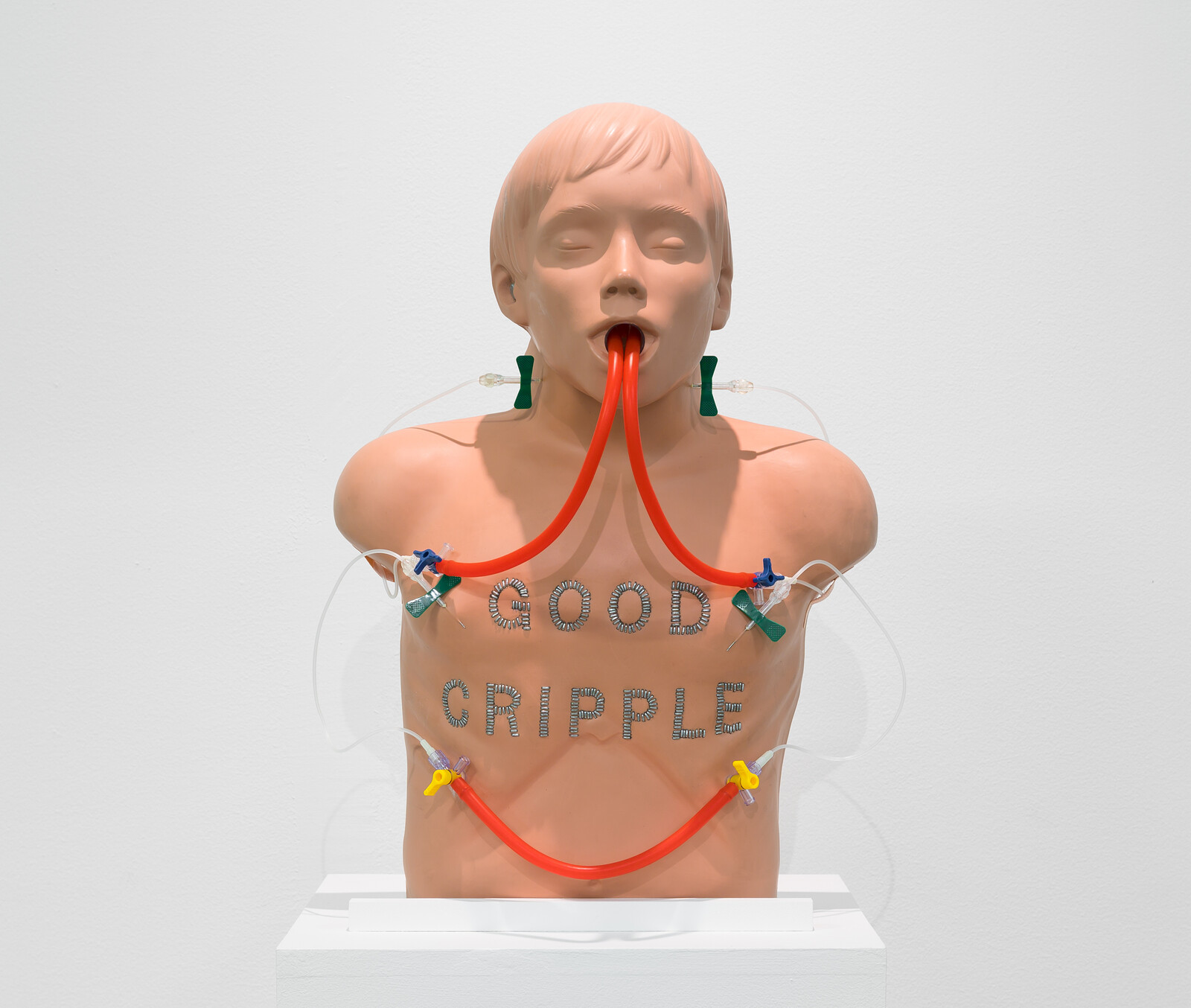February 23–August 4, 2024
Overgaden Neden Vandet 17
DK-1414 Copenhagen
Denmark
Hours: Tuesday–Friday 1–6pm,
Thursday 1–8pm,
Saturday–Sunday 11am–6pm
overgaden@overgaden.org
Established as a kunsthal for artists by artists back in 1986, O—Overgaden continues to be one of the few large-scale art institutions in Denmark with a focus on supporting emerging practices, local and international.
This spring, O mounts the first major institutional shows in Denmark by sculptor Julie Falk, the duo of poet and performer Zahna Siham Benamor and painter Apolonia Sokol, video artist and sculptor Panteha Abareshi, and visual artist Asta Lynge. Each show is accompanied by a new edition in O’s publication series, released in print and online, and designed by fanfare. Additionally, together with Institut Funder Bakke, O mounts a group show on accessibility, involving, among others, artists and architects Park McArthur and Andreas Angelidakis, while O will also facilitate a talk series with the local working group Art Workers with Disabilities.
Finally, O expands its program in O-Rooom—a space supporting communal culture, debate, live acts, and all impromptu informalities in between—by housing the parasite publishing-and-exhibiting platform Adagio for Things, founded by Wilfred Wagner to showcase new books-as-artworks, this spring featuring, among others, Lieven Lahaye and Ott Metusala.
Julie Falk: Antiform
February 24–May 5, 2024
The arrested pace of the hospitalized body—caught in bed as if “incarcerated” while, hopefully, healing—is subject to scrutiny in Julie Falk’s (DK, 1991) recent sculptural and filmic works. For her first institutional solo show at O—Overgaden, a new video piece Crip Time loops increasingly aggressive pendulum movements around a marble sculpture by Alicja Kwade near the Danish hospital Riget, turning the well-intended decorative sphere into an image of a claustrophobic centripetal power that keeps the vulnerable body in close range of its medical center, exposing the system of care as also one of control and custody. Including bronze casts of wig hair and perforated marble slabs, Antiform shows the bodily displacement of the artist herself, working away from the studio, as an inverse or anti-position, operating at odds, collecting scrap materials; forms that are essentially discarded, abject, or thrown from use or even from art—Antiforms.
Zahna Siham Benamor & Apolonia Sokol: The False Rose of Jericho
March 9–May 5, 2024
Riffing on the friendship of poet and performer Zahna Siham Benamor (DK, 1988) and painter Apolonia Sokol (FR, 1988), their first ever collaborative duo exhibition takes Benamor’s iconography as its point of departure—the young Danish intellectual author and activist with roots in Algeria. Surrounding a central record player, repeating a raw soundscape collaging raï rhythms, strings, rap, and Benamor’s poetic calls, the darkened exhibition space hosts a novel series of oil portraits and a set of larger life-sized motifs by Sokol, displacing oil painting’s historical motifs to instead enthrone and depict, among others, themselves along with friends and family, collaborators and companions, all hung on a hand-printed background that builds up as a set of punkish, pitch-black motifs.
Panteha Abareshi: Impaired Erotics
May 24–August 4, 2024
In arresting sculptural and filmic gestures, Panteha Abareshi (US, 1999) employs the experience of living in a chronically ill body, unpicking the associated stigma in their visual arts practice as well as scholarly writing. From the perspective of continuous observation—and hence objectification—of one’s bodily materiality, in their new series of video and sculptural works, created specifically for O—Overgaden, Abareshi unapologetically addresses the taboo fetishization of the disabled body that links dependency on support structures, from the wheelchair and medical tubes to human care, with questions of domination and subjugation, with all their erotic implications.
Asta Lynge: Hard Rock
June 8–August 4, 2024
The cold surfaces of a digitized surveillance society are probed in Asta Lynge’s (DK, 1988) succinct practice—from the voice of Siri to the wide-eyed technologies gripping into all pockets of contemporary life. In her new series of artworks, developed for O—Overgaden, “potent,” “noisy,” and “hard” cultural emblems are candidly dismantled. In one sculpture, Lynge picks apart the double-neck guitar—the one-up tool, multiplying masculinity, associated with the over-franchised hard rock music genre and big budget showmanship—stripping bare the instrument’s body, looking beneath its boasting interface. In another gesture, Lynge imposes black sound panels on O—Overgaden’s mostly airy, open, post-industrial spaces. Lowering the ceiling and dampening the acoustics subdues visitors’ movements, forming a silent, if violent, spatial confinement.
Andreas Angelidakis, Park McArthur, Magda Mostafa, Jordan Whitewood Neal, and more: A Sock in the Eye
May 4—June 16, 2024, Institut Funder Bakke
June 21–August 4, 2024‚ O’s O—Rooom
Co-curated with Institut Funder Bakke, the group show A Sock in the Eye focuses on accessibility and its absence at the Royal Danish Art Academy. Three architects and architectural researchers, chosen in collaboration with the Chair of Architecture and Care at ETH Zurich, are asked to introduce a speculative consideration of how to solve the listed building’s lack of structural access, which has, since its founding in 1754, restricted or excluded disabled students, faculty, staff, and visitors. Alongside the maquettes, an artwork by Park McArthur, Carried and Held (2013–), will also be on view as part of this presentation that reimagines space in numerous senses: emotional, physical, against and with different intimacies.
Support: O’s main funder is the Danish Arts Foundation. Further generous supporters include Aage and Johanne Louis-Hansen’s Foundation, the Obel Family Foundation, the Augustinus Foundation, Beckett-Fonden, and the A.P. Moller Foundation.

